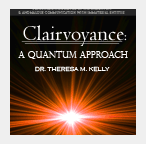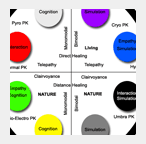Clairvoyance
Parapsychology Articles, Papers and Books
Home > Articles > Psychical Phenomena > Extrasensory Perception > Clairvoyance
![]()
|
| NEWSLETTERS |
| Get the best from QPsychics.com in your inbox! |
|
| PARAPSYCHOLOGY ORGANIZATIONS |
"With confidence in the importance of utilizing the investigative mode of the established sciences in order to inquire into the authenticity and to potentially explain the nature of psychical phenomena."  |
 |
 |
 |
 |
The Stages of Clairvoyant Cognition
Clairvoyance is the psychical influence of a hypothetical objective environment I call the universal information system, or Nature, which I assume is capable of storing, retaining, and recalling information pertaining to the past and current states of objects and events, involved in the interim integration, processing, shifting, and retrieval of information pertaining to objects and events in real-time, and probabilistically determining the potential trajectory of future events. In regards to intentional clairvoyant cognitive techniques, several stages are assumed to exist through which the clairvoyant cognitive acquires information. During spontaneous (non-intentional) clairvoyant cognition, these processes are assumed to run automatically via the subconscious. However, since the processes are run subconsciously, there is no conscious directive. To obtain a level of conscious direction, the clairvoyant cognitive is assumed to require achieving each step in order to perform successfully.
Selection techniques include, but are not limited to: eye to eye contact, touch, altered states of consciousness, spatial proximity, or the use of an electronic medium (e.g. phone or computer; real-time programs such as a webcam, chat or internet phone). Clairvoyant cognitive processes (ESP processes in general) appear limited to exploratory search parameters. Exploratory search is a specialization of information exploration in which represents the activities carried out by clairvoyant cognitives. Exploratory search includes a broad class of activities for the clairvoyant cognitive to implement including investigating, evaluating, comparing, and synthesizing.
(Adapted from the book “Clairvoyance: A Quantum Approach” by Theresa M. Kelly, MsD.)
|
|||

